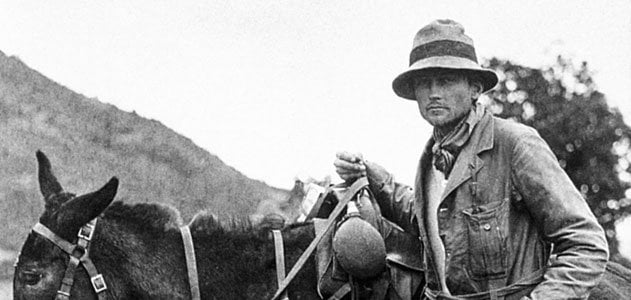
Hiram Bingham III was an American explorer who became interested in Latin American history during his time at Yale and Princeton University. He made repeated expeditions to South America and brought public attention to the historical site of Machu Picchu. Bingham published Inca Land in 1922 following his expedition to Peru in 1911. The book focuses on his observations of the environment, peoples, and culture of Peru. Bingham also provides commentary on Incan history and the architecture that surrounds the locals. While Bingham shows some respect for the peoples of Peru and genuine curiosity of their culture, his perspective is ultimately defined by his being a Westerner.
Overall, Bingham presents what he viewed during his travels to the reader in a relatively objective way. However, there are moments where he reminds the reader of his time period and the pre-conceived notions of non-Western societies. For example, in Chapter V where Bingham describes his experience at Lake Titicaca, he dips into environmental determinist theory and the mood of the natives. “In judging the attitude of mind of the natives of Titicaca one should remember that they live under most trying conditions of climate and environment.” (Bingham, 102). He then continues and contrasts them to the happy Samoans. “…delicious food can always be obtained, and cocoanuts from which cooling drinks are secured without cost. Who could not develop cheerfulness under such conditions?” (104). Further in the same chapter, Bingham discusses the costumes worn by the Aymara secret societies: “…whose members, wearing repulsive masks, are clad in the most extraordinary costumes which can be invented by primitive imaginations.” (107). While not outright disrespectful, these comments reflect Bingham’s preconceived notions of non-Western societies (and their peoples) as less advanced and more primitive.
In Chapter 8, “The Oldest City in South America,” Bingham describes his time in Cuzco. One observation he makes is the combination of new technology and progress in combination with the old. “…there are corresponding evidences of advancement. Telephones, electric lights, street cars, and the ‘movies’ have come to stay.” (157). Those in the city tended to dress “more in accordance with European notions.” (159). His comments on progress and the evolving culture of Cuzco reflect the social and economic change Latin America experienced after the end of colonialism. Liberals of the newly freed nations pushed for technological advancement and for trade to begin on the international market. Transportation technology such as railroads and steamers were used to move larger quantities of cargo to ports for trade. Socially, there was still a desire to import European culture and generally, to emulate the societies of their former rulers. This competed with a desire for new national identities, where the rural and indigenous people of Latin American countries were what defined the identity. Thus, there was a different culture in cities in comparison to the countryside. This travelogue reflects a perception of Latin America as a developing region, with a primitive culture being pushed forward by Western technology and culture.
Works Cited
Bingham, Hiram. Inca Land: Explorations in the Highlands of Peru. Houghton Mifflin, 1922. http://www.archive.org/stream/incalandexplorat00bing
